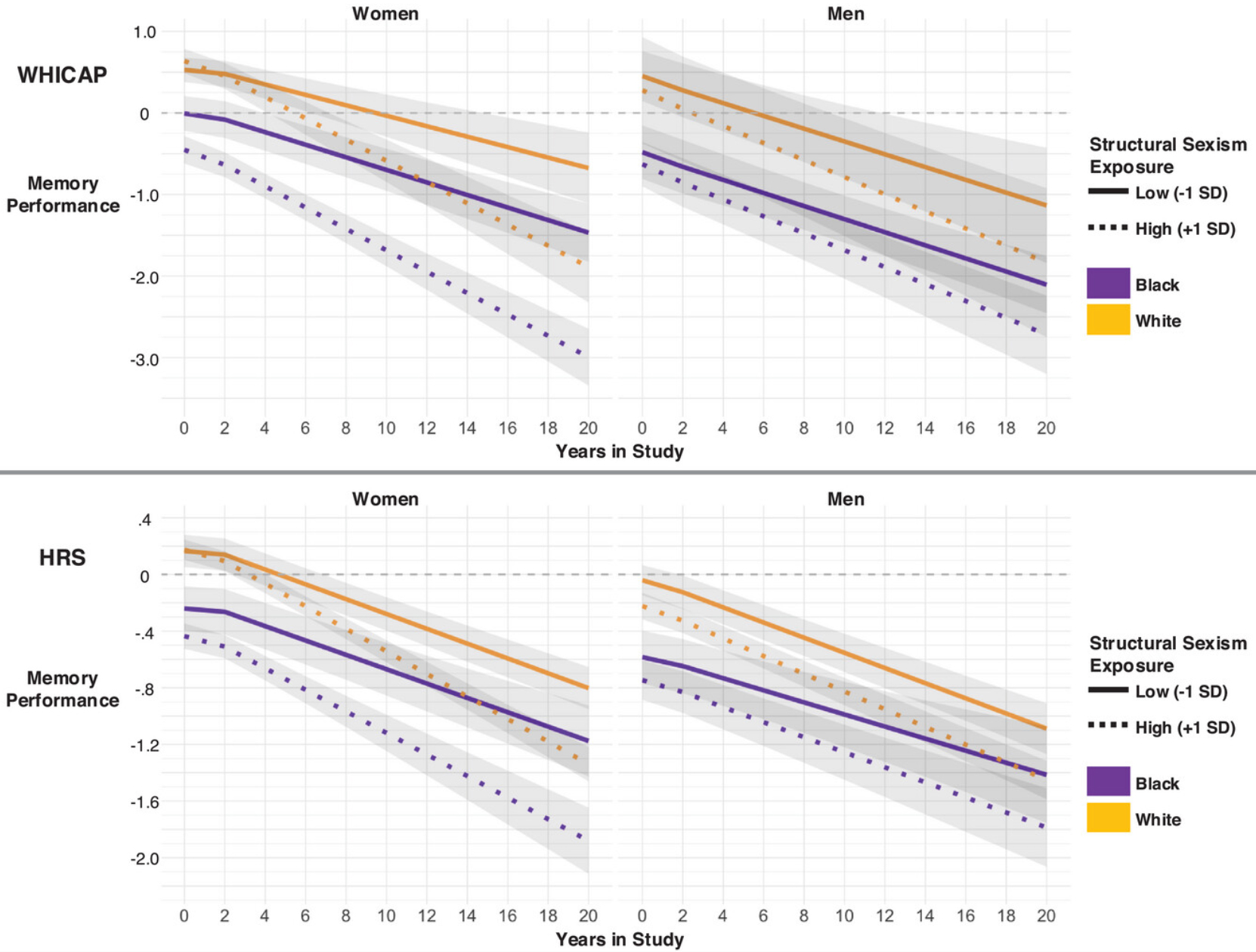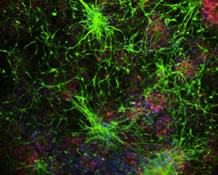Columbia University
Irving Medical Center
Neurological Institute
710 West 168th Street, 3rd floor
(212) 305-1818
TaubCONNECT Research Perspective:
January 2025
2: Early Life Exposure to Structural Sexism and Late-Life Memory Trajectories Among Black and White Women and Men in the United States
3: The Effects of Mosaicism on Biological and Clinical Markers of Alzheimer's Disease in Adults with Down Syndrome
4: Plasma Phospho-tau217 as a Predictive Biomarker for Alzheimer's Disease in a Large South American Cohort
Inflammatory Biomarkers Profiles and Cognition Among Older Adults
 |
 |
| Aline Thomas, PhD | Yian Gu, MD, MS, PhD |
Inflammation plays a major role in cognitive aging. Previous studies on peripheral inflammation and cognitive aging have found selected inflammatory biomarkers. However, it is important to consider a broad panel of inflammatory markers to better understand their collective impact on cognitive health.
In a study recently published in Scientific Reports, we measured 23 circulating inflammatory biomarkers in 1,743 older adults (ā„ā65 years-old) without dementia from the community-based, multiethnic Washington Heights Inwood Columbia Aging Project. We used principal component analysis (PCA) to categorize individuals into six distinct inflammatory profiles and then determine whether certain inflammatory profiles were associated with cognitive decline over a 12-year follow-up period.
One of the key findings was that a specific pro-inflammatory profile (PC-1), characterized by elevated levels of markers like TNF-Ī±, IL-6, and MIP-1Ī², was associated with lower baseline cognitive performance. Individuals with this inflammatory profile performed worse in global cognition, processing speed, visuospatial ability, and language skills. Surprisingly, however, this profile did not predict cognitive decline over time. Another inflammatory profile (PC-5), marked by high levels of PDGF-AA and RANTES, did show a significant association with faster cognitive decline.
The study highlights the complex relationship between inflammation and cognitive aging. While some inflammatory markers may reflect early brain pathology, others could directly contribute to neurodegeneration. This research adds to the growing body of evidence linking inflammation to cognitive aging and supports further exploration of anti-inflammatory therapies that could potentially slow cognitive aging and combat dementia.
Yian Gu, MD, MS, PhD
Associate Professor of Neurological Sciences (in Neurology, Epidemiology, the Sergievsky Center, and the Taub Institute)
yg2121@cumc.columbia.edu
 |  | |
| Justina F. Avila-Rieger, PhD | Jennifer J. Manly, PhD |
Structural sexism represents the ways that policies and practices in our society create and maintain inequality between women and men. This inequality is seen in several different areas, including women being paid less money than men for the same work, women not being adequately represented in government positions, and unjust laws that limit womenās control over their bodies. Women in the U.S., particularly those aged 65 and older, have experienced different levels of this structural sexism throughout their lives. Eventually, these gender inequalities make it difficult for women to access the opportunities and resources needed to be healthy and age well. Yet, little is known about how living in an environment with high levels of structural sexism can impact the late-life cognitive health of older women.

Figure. 2 Predicted memory trajectories at low and high levels of structural sexism across racialized groups, sex/gender, and study. Figure 2 plots predictions from Model 2 for individuals at Ā± 1 SD from the overall mean of structural sexism in the United States between 1900 and 1960. The x-axis represents the years since the participantsā baseline visit, and the y-axis represents the corresponding predicted memory score. The figure shows that, in both studies, associations between structural sexism and baseline memory performance were stronger among Black women compared with White women. Women in both studies also showed stronger structural sexism-memory decline associations compared with men.
Together with senior author Dr. Jennifer J. Manly, we examined associations between early-life exposure to state-level structural sexism and late-life memory trajectories among 20,945 Black and White women and men aged 65 and older who were part of either the Washington Heights/Inwood Columbia Aging Project or the Health and Retirement Study. To determine how much structural sexism each participant encountered early in life, we created a measure based on the state and year participants were born. This measure included data on gender inequalities in labor force participation, wages, poverty levels, and government representation, as well as data on womenās reproductive health issues and the influence of religious conservatism on gender role beliefs. As recently reported in Alzheimerās and Dementia and featured in the CUIMC Newsroom, we found that exposure to greater structural sexism was associated with lower baseline memory performance among WHICAP women and HRS men and faster memory decline among women in both studies. Women born in the state with the highest structural sexism showed memory decline like that of those who were nine years older. Structural sexism-baseline memory associations were stronger among Black women than White women.
These findings show that cognitive health among older women and men can be influenced by the level of structural sexism they encountered early in life. Structural sexism can be changed through new policies that decrease gender inequalities. Lowering structural sexism may, in turn, reduce memory decline among women.
Justina F. Avila-Rieger, PhD
Associate Research Scientist in the Sergievsky Center
jfa2125@cumc.columbia.edu
 |
 |
| Laura Xicota, PhD | Joseph H. Lee, DrPH |
Individuals with Down syndrome (DS) are at a higher risk of Alzheimer's disease (AD), with up to 80% presenting AD before the age of 65. This increased risk is largely due to the overexpression of the APP gene on chromosome 21, although other genes in and outside chromosome 21 can also play an important role. Yet, there is a large variability in the age of presentation of AD, with some individuals managing to escape dementia symptoms up until their death. Understanding this variability in AD-related phenotypes is one of our group's main research focuses. For this study, Dr. Laura Xicota analyzed the effects of mosaicism of chromosome 21 in AD and related endophenotypes in two cohorts of individuals with DS. Individuals with mosaicism carry a percentage of cells with only two copies, rather than three copies, of chromosome 21, potentially lowering the overexpression of some of its genes, including APP.
Our study, published in eBioMedicine, included a total of 825 adults with DS from two different cohorts. These participants had clinical, cognitive, biomarker, and, in some cases, neuroimaging and CSF data. We observed that individuals with mosaicism had lower plasma concentrations of AĪ²40 and AĪ²42 peptides, suggesting a lower expression of the APP protein. In addition, for older study participants with a more extended period of follow-up time, we observed a smaller decline in cognitive scores as well as a lower incidence of dementia in participants with mosaicism compared to those with full trisomy.
This study showed that part of the variability in the presentation of AD in DS could be explained by mosaicism, which would have a protective effect against AD in this population. However, more work remains to be done to understand other genetic determinants of AD risk in this population, including functional validation of AD-related genes.
Joseph H. Lee, DrPH
Professor of Epidemiology (in the Sergievsky Center and the Taub Institute)
jhl2@cumc.columbia.edu
 |  |  | ||
| Neetesh Pandey, PhD | Lawrence S. Honig, MD, PhD | Giuseppe Tosto, MD, PhD |
Bloodābased Alzheimer's disease (AD) biomarkers have been increasingly employed for diagnostic, prognostic, and therapeutic monitoring purposes. Plasma p-tau217 exhibits strong associations with AD hallmarks in CSF and brain, compared to other p-tau isoforms and plasma biomarkers in general. However, most of the investigations have so far focused on highly selected cohorts with established AD-endophenotypes (CSF biomarkers, autopsy report, PET etc.), while data on cohorts with clinical assessment are currently lacking. In addition, most studies have been conducted in non-Hispanic Whites, limiting our understanding of the performances and utility of these biomarkers across ethnicities.
We tested the association between p-tau217 levels (Quanterix Simoa ALZpathp-tau217 assay) and AD risk in in 525 Peruvians from the Genetic of Alzheimer Disease in Peruvian Populations (GAPP) study, a cohort of mestizos from Lima and indigenous groups from the Peruvian Andes (Aymaras and Quechuas). As recently reported in Alzheimerās Research & Therapy, higher levels of p-tau217 were significantly associated with AD risk and correlated with worse cognitive performances. For the latter, we employed the Rowland Universal Dementia Assessment Scale (RUDAS) score, a scale administered in few minutes that measures executive function, memory, language, and perceptual motor function, and has minimal educational biases, even in patients with low literacy. P-tau217 levels did not differ between healthy controls and MCI. Finally, higher p-tau217 levels were observed in participants carrying at least one APOE-e4 allele. The ROC-AUC for p-tau217 was estimated at 82.82% in the fully adjusted model. To our knowledge, this is the largest study conducted in a South American cohort phenotyped for AD with available p-tau217 assay.
Giuseppe Tosto, MD, PhD
Assistant Professor of Neurological Sciences (in Neurology, the Taub Institute, and the Sergievsky Center)
gt2260@cumc.columbia.edu


